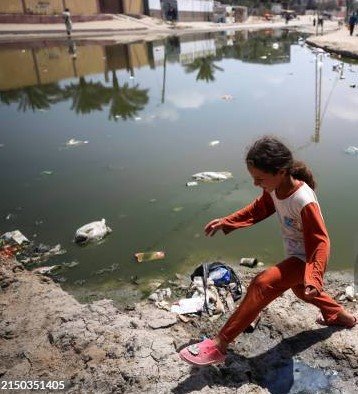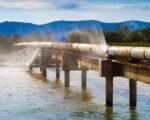A fierce heatwave is gripping Israel, and forecasters warn it could smash all-time temperature records in multiple cities by midweek.
Forecasts Push Past Historic Highs
Meteorologists are watching the numbers climb with a mix of awe and unease. By Wednesday, parts of the country could see temperatures few have ever experienced — and certainly not for two days straight.
Amos Porat, who heads Climate Services at the Israel Meteorological Service (IMS), says the eastern corridor from the Hula Valley to the Arava Desert will bear the brunt. That’s a stretch covering fertile valleys, tourist hubs, and sparsely populated desert — all about to feel the same furnace-like air.
Tiberias, sitting on the edge of the Sea of Galilee, is forecast to hit 49°C on Wednesday and 47°C on Thursday. Its previous high? 45.9°C. Beit She’an, a city used to blistering summers, could touch 48°C, two degrees hotter than its record.
Numbers That Keep Climbing
It’s not just the hottest spots breaking records. Even the usually milder northern hills will sweat through highs that would be extreme for the desert. Karmiel is slated for 45°C and 44°C on consecutive days, beating its old record by a solid margin.
Afula, in the Jezreel Valley, isn’t far behind with forecasts of 44°C. Towns across the Jordan Valley are facing similar heat spikes.
The IMS has already flagged the unusual persistence of this heatwave. While July and August typically bring searing weather, the duration and magnitude point to something more troubling than seasonal norms.
Climate Change Fingerprints
Porat doesn’t mince words about what’s driving this. While heatwaves aren’t rare, he says the intensity and length of the current system suggest climate change is a factor. And it’s not a standalone event. Israel, like much of the Mediterranean basin, is seeing hotter summers, longer droughts, and more extreme weather swings.
A single heatwave doesn’t prove a trend, but scientists say the broader data is painting a clear picture. The number of “very hot” days — those above 37°C in inland areas — has climbed steadily over the past 40 years. And the peaks are getting sharper.

Cities Under Strain
Urban areas will feel the brunt in ways rural zones might escape. Heat islands — those concrete-heavy spaces that trap warmth — can keep nighttime temperatures stubbornly high. That robs residents of the cooler evenings that usually offer relief.
Hospitals are already on alert for a rise in heatstroke and dehydration cases. Power companies expect record demand as air conditioners run flat out. In some neighborhoods, transformers have already blown under the load during past spikes, and utility crews are on standby.
Coping Measures Across the Country
Israel’s Health Ministry is repeating the familiar summer warnings: stay hydrated, avoid outdoor work during peak hours, and keep an eye on the elderly and young children. Schools and summer camps are adjusting schedules, cancelling outdoor activities, and moving classes into air-conditioned halls.
In Tel Aviv, shaded beaches and public fountains are filling up fast. Even the city’s religious beach, which follows modesty guidelines, saw hundreds cooling off last Friday as the heatwave rolled in.
Some local councils are offering chilled public spaces for residents without reliable cooling at home. These “heat shelters” — community centers, libraries, even shopping malls — provide both air-conditioning and water.
By the Numbers: This Week’s Forecast Highlights
Here’s what’s expected in some of the hottest spots:
| Location | Wed Forecast | Thu Forecast | Previous Record |
|---|---|---|---|
| Tiberias | 49°C | 47°C | 45.9°C |
| Beit She’an | 48°C | 46°C | 46.3°C |
| Karmiel | 45°C | 44°C | 43.5°C |
| Afula | 44°C | 43°C | 42.9°C |
Rural and Desert Challenges
For farmers, the timing is particularly bad. Crops in the Jordan Valley are already stressed from a dry winter, and irrigation systems will be pushed to their limits. Water evaporation rates soar in this kind of heat, meaning even well-irrigated fields can suffer.
Livestock producers are scrambling to provide shade and cooling systems for animals. In some cases, heat stress can cut milk production in dairy herds by up to 20% over just a few days.
In the south, Bedouin communities in unrecognized villages — often without formal infrastructure — face an even tougher battle. With limited access to mains water or electricity, coping with 45°C-plus temperatures can be life-threatening.
Past Records and Present Fears
Israel’s national heat record stands at 54°C, measured in the Jordan Valley in 1942. While this week’s forecast isn’t expected to hit that extreme, the spread of record-breaking highs across so many locations is rare.
The IMS says that if the models hold, August 2025 could join the list of Israel’s hottest months on record. That list is already dominated by recent years, underscoring how quickly climate patterns are shifting.
Looking Beyond This Week
Forecasters expect the heatwave to break late Thursday night or early Friday, with temperatures dropping by 5–7 degrees. But that’s still above seasonal averages in many regions.
And there’s another worry: prolonged high heat can worsen wildfire risks, particularly in areas with dry brush and high winds. Fire services are already restricting controlled burns and urging the public to avoid open flames outdoors.
For now, the country is hunkering down, bracing for two days that could rewrite weather history books. Whether it’s a farmer in the Arava or a commuter in Tel Aviv, the heat is about to become a conversation — and a challenge — everyone shares.








